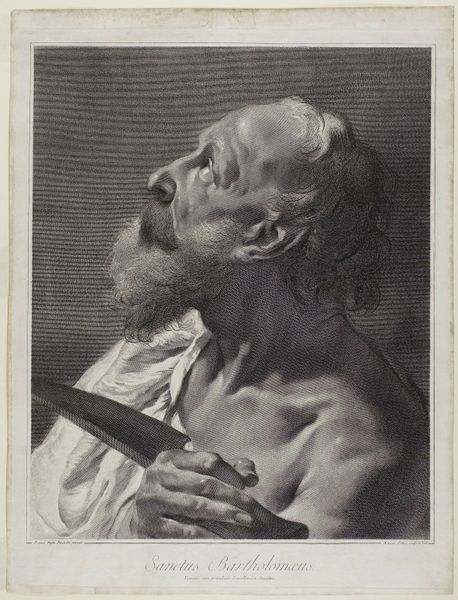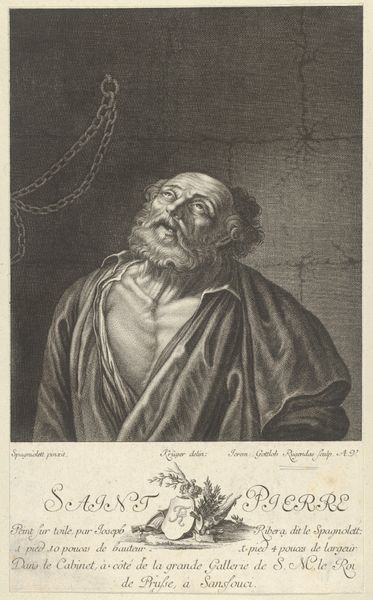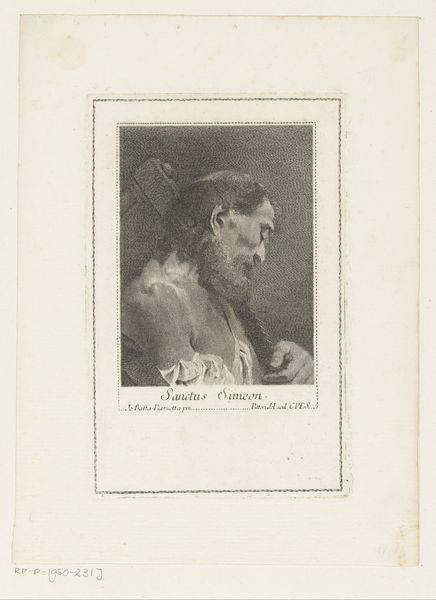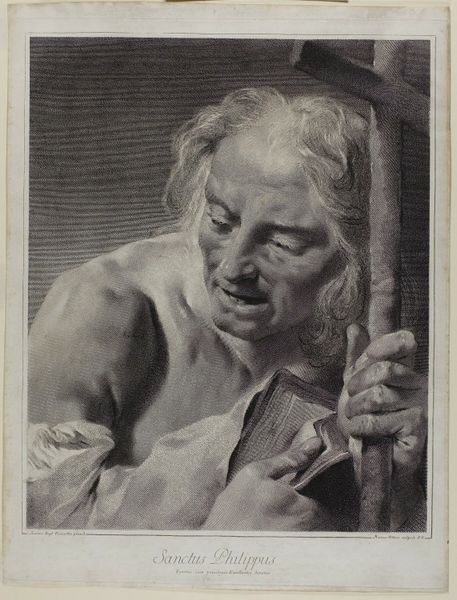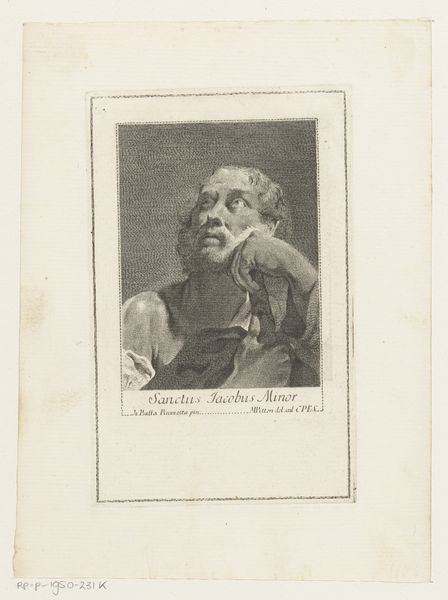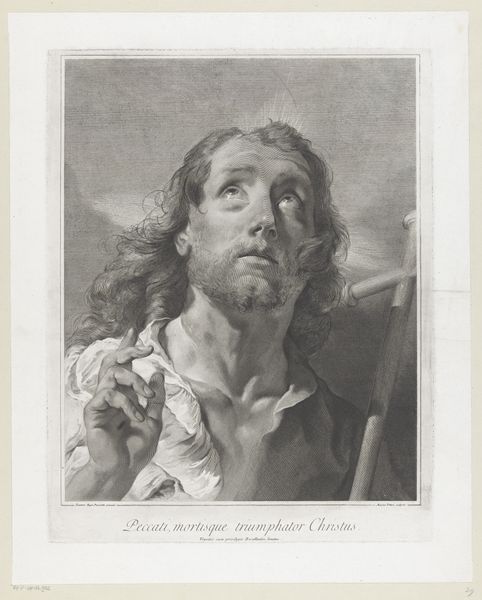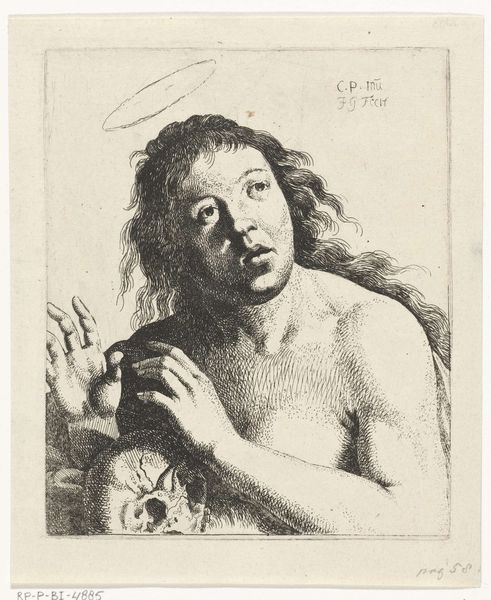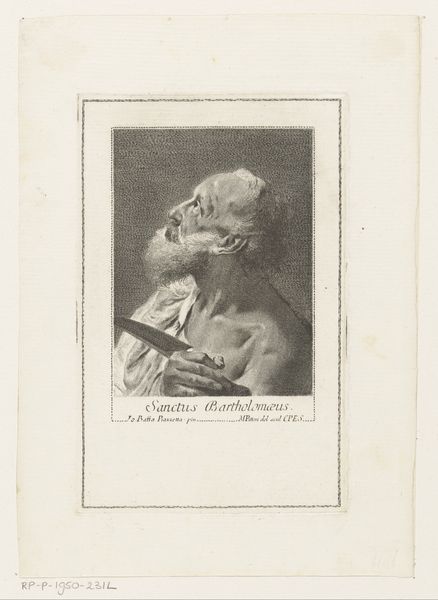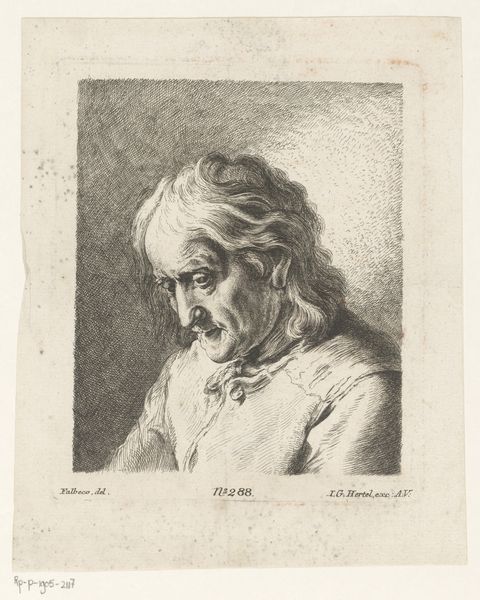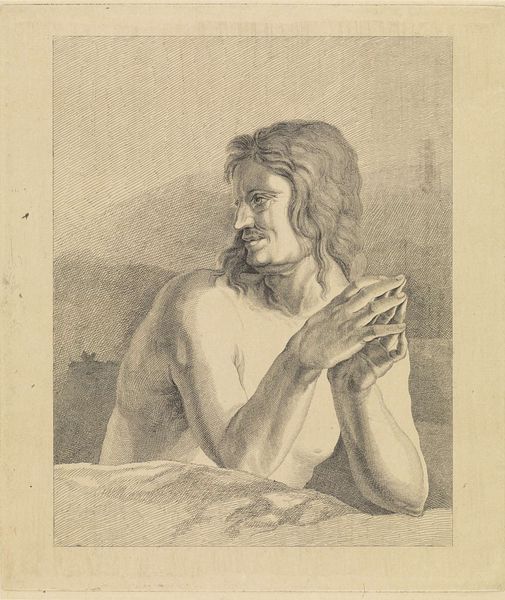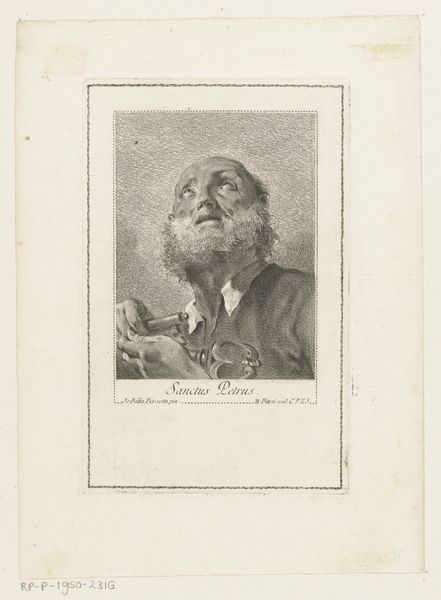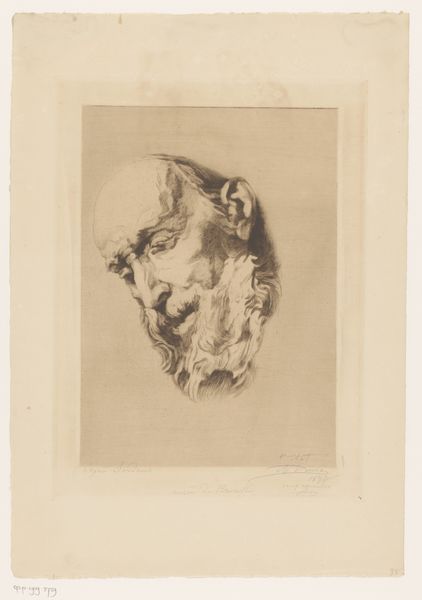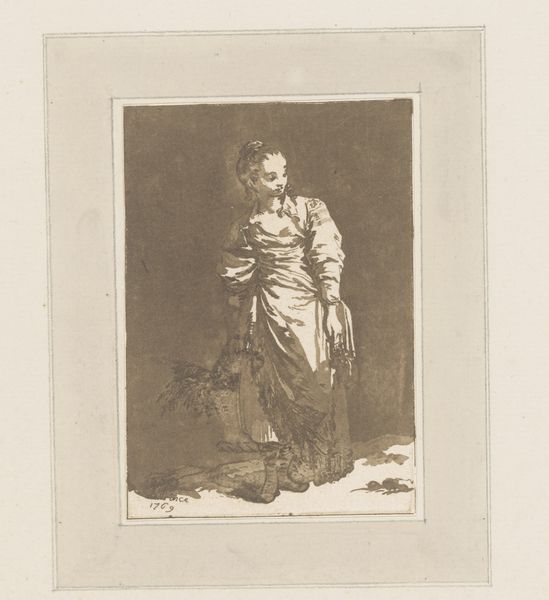
print, engraving
#
portrait
# print
#
figuration
#
chiaroscuro
#
line
#
history-painting
#
academic-art
#
engraving
Dimensions: height 436 mm, width 341 mm
Copyright: Rijks Museum: Open Domain
Curator: This engraving by Giovanni Marco Pitteri, dating from somewhere between 1712 and 1786, depicts the Apostle James the Less. What catches your eye about it? Editor: Well, first off, it’s brooding, isn't it? That upward gaze, the way he rests his head on his hand. You immediately sense this internal struggle, a deep well of thought. Curator: Absolutely. Pitteri really captured that intensity. But let's consider the method here: this is an engraving, a print. Each line meticulously carved into a plate, then inked and pressed. Think of the labor! The slow, deliberate process to render such emotion. It speaks to a pre-industrial pace, a handcrafted sensibility so removed from our digital world. Editor: Yes, there’s a real tension there – this image that seems to pull you into a private, almost vulnerable moment, achieved through such painstaking, almost impersonal technique. He’s lost in contemplation, perhaps grappling with his faith, but the hand that renders him is entirely devoted to process. It’s like witnessing a collision of worlds, the spiritual and the mechanical. Curator: I see that, and that reminds me—look at the shadows, that incredible chiaroscuro! It’s not just about creating form; it’s about amplifying the drama, turning James’ inner turmoil into something visually palpable. And consider what an accessible medium engraving was. Prints allowed for the wide dissemination of religious imagery, ideas moving through the culture… Editor: ...Almost like a form of early mass production. Pitteri probably didn't have to move a mountain of resources like with the pigments and the canvas used for painting. I mean the paper it is printed on; that itself is also a statement about accessibility and perhaps the artist trying to take part in popular piety movements of his time. Curator: Precisely! A small piece carrying monumental weight, both in subject and spirit, don’t you think? Editor: Definitely. A testament to the power of quiet contemplation and careful craftsmanship and how both of those can affect others even centuries after they are done.
Comments
No comments
Be the first to comment and join the conversation on the ultimate creative platform.
